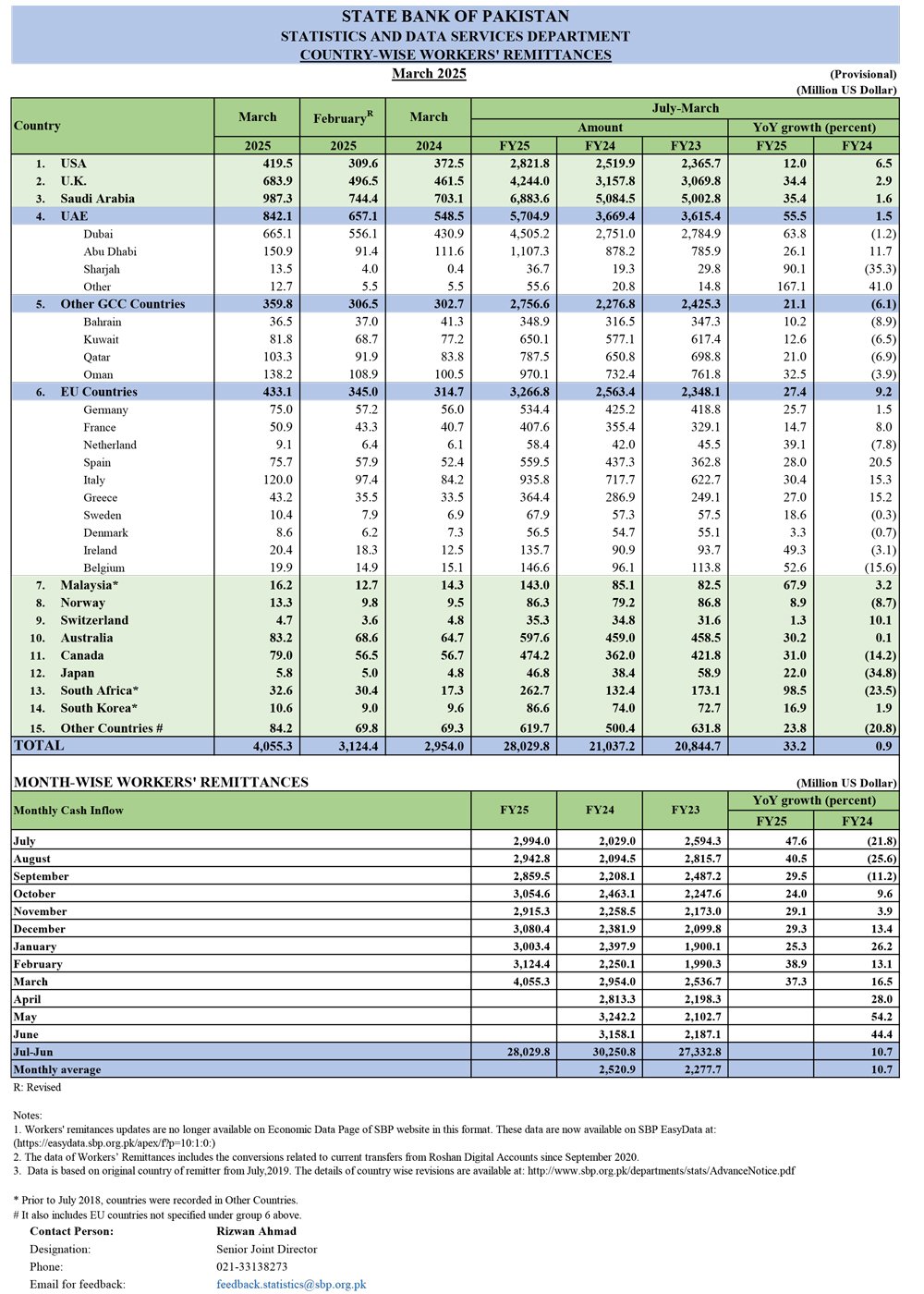KARACHI: Pakistan’s workers’ remittances surged to an all-time high of $4.1 billion in March 2025, marking the first time that monthly inflows have crossed the $4 billion milestone, the State Bank of Pakistan (SBP) said on Monday.
This historic inflow represents a 37.3% year-on-year increase from March 2024 and a 29.8% month-on-month rise compared to February 2025. It is the highest level of monthly remittances ever recorded in the country’s history.
According to Mustafa Mustansir, Director of Research and Business Development at Taurus Securities Limited, the surge was aided by seasonal inflows during Ramadan and Eid.
“Apart from that, remittances have also picked up due to the better economic health of the sending countries, amid falling domestic inflation and increase in real incomes. Also, the number of registered overseas workers may also be on the rise,” he told Geo.tv.
Cumulatively, workers sent home $28 billion during the first nine months of the current fiscal year (Jul-Mar FY25), reflecting a substantial 33.2% rise over the $21.0 billion received during the corresponding period of FY24.
The record inflows in March were primarily driven by remittances from Saudi Arabia ($987.3 million), the United Arab Emirates ($842.1 million), the United Kingdom ($683.9 million), and the United States ($419.5 million).

These four countries accounted for nearly 72% of the total inflows during the month.
Among GCC countries, the UAE showed exceptional growth, with remittances increasing by 54% year-on-year, largely supported by inflows from Dubai ($665.2 million) and Abu Dhabi ($151.1 million), up 54% and 35% respectively.
Saudi Arabia remained the single largest contributor, with a 35% year-on-year increase in March. Meanwhile, the UK posted a 48% rise, and the US saw a 12% gain compared to the same month last year.
Other notable contributions came from EU countries ($426.7 million, up 38% YoY), with Germany and Italy registering sharp increases of 34% and 30% respectively. Australia and Malaysia also posted solid year-on-year growth of 43% and 10%.

